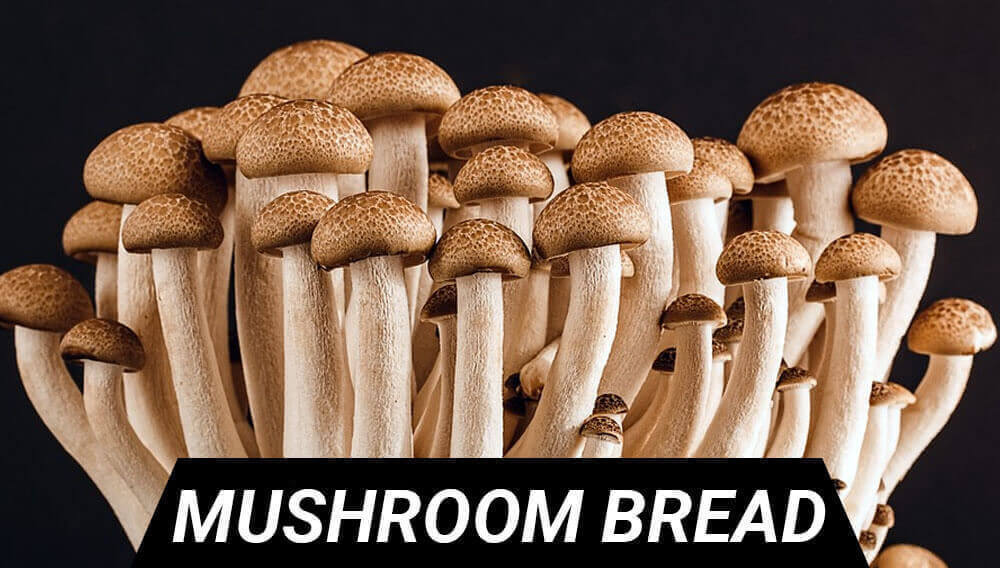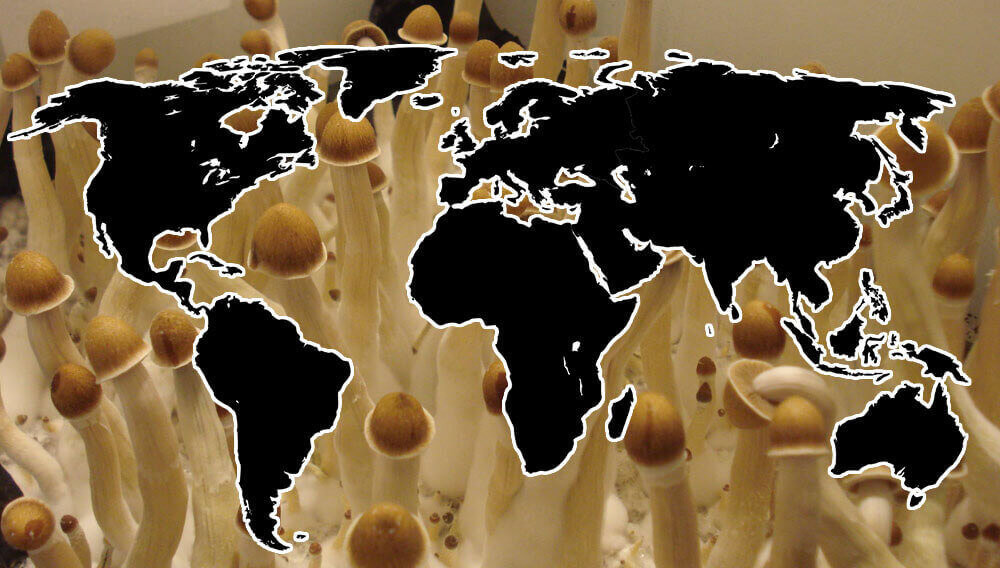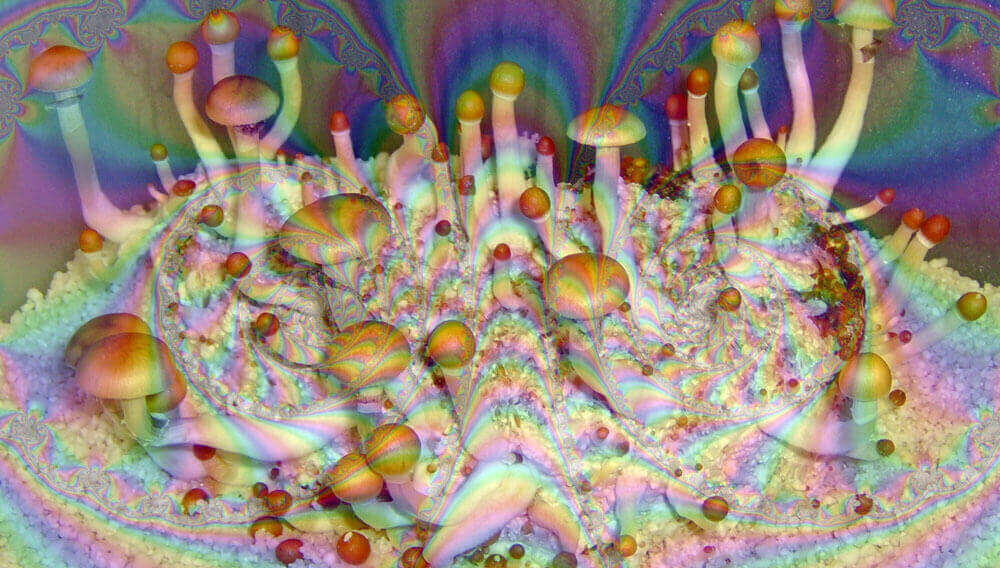Mushroom bread consists of sprouting-fungi rye substrate – fungus mycelium has been previously injected; mushroom growing’s very easy – put some rye substrate in a tupper and leave it in a dark, wet place: with proper humidity, the mushrooms will grow autonomously – when cutting the first mushroom round, they’ll grow bigger (third round’s scarce and little).

mushroom bread
Hallucinogenic mushrooms or psilocybe fungi
They have high psychoactive effects – currently, hallucinogenic mushrooms have become internationally known.
In ancient times, they were known and used by many civilizations worldwide – Scandinavian peninsular tablelands (Vikings), deep Amazon-basin rainforest, South Mexican Sierra Madre mountainous areas (pre-Columbian peoples), Indo-Iranians, Greeks, Siberian nomadic tribes – for religious rituals, close to their Gods thru sensorial changes and hallucinations.
Western world almost forgot about hallucinogenic mushrooms till 1930 – Robert Weitlaner, anthropologist, discovered Otomi rituals (based on these mushrooms); in 1950, R. Gordon Wasson, mycologist, discovered rituals with mushrooms in Mexico – scientists got interested again: Albert Hoffman isolated psilocybin – main fungi hallucinogenic compound; this research showed hallucinogenic mushrooms to Western World, and 70-80s countercultural hippie movement made them famous worldwide – currently, they’re almost internationally prohibited, but their consumption and marketing have increased (more and more people are having these magic fungi).
Types of hallucinogenic mushrooms
It would be very difficult to summarize the hallucinogenic fungi strains – more than 200 strains, divided into more than 14 genera (such as psilocybe, where most of psychotropic fungi come from).
Most common species: Psilocybe cubensis, Panaeolus cyanescens, Psilocybe Mexican, Panaeolus cinctulus, Psilocybe azurescens, Psilocybe semilanceata, Psilocybe cyanescens, Gymnopilus junonius, Psilocybe allenii, Gymnopilus luteofolius.
Where are they?
Geographically, psychoactive mushrooms grow worldwide – prairies, mountains, riversides, forests: America, Europe, Africa, Asia, Oceania.

Localization mushrooms
– North America: Mexico, USA – northwest, south, Oregon, San Francisco, Alabama, Atlanta, Georgia, Washington, Pennsylvania, Ohio, West Virginia, and Canada – British Columbia.
– Central/South America: Colombia, Brazil, Venezuela, Chile, Cuba, Guatemala, Honduras, Argentina, El Salvador, Ecuador, Bolivia.
– Europe: Austria, Belgium, Bulgaria, Czech Republic, UK, Germany, Holland, Italy, Ireland, Serbia, Switzerland, Denmark, Scandinavia, Finland, France, Scotland, Slovakia, Siberia, Greece, Bosnia, Hungary, Kosovo, Romania, Slovenia, Spain.
– Africa: South Africa.
– Asia: Cambodia, Malaysia, Myanmar, Thailand, India, Philippines, Nepal, Vietnam.
– Oceania: South Australia, and its islands.
In Spain, there are three popular hallucinogenic mushroom species: Psilocybe semilanceata (Basque Country, peninsular north), Psilocybe Hispanic (Pyrenees) and Psilocybe galicae (Galiza).
Why are they hallucinogenic?
The substances providing the characteristic effects of psychotropic fungi are psilocin and psilocybin – their chemical structure’s really similar to serotonin.
These alkaloids block the serotonin effects; their properties and consequences are very similar to LSD – mushrooms are totally natural, but LSD’s totally synthetic and chemical (LSD effect, 8-12 hours; fungi, 4-6 hours).
Effects
Mushroom consumption in human body provides very different effects – consumer’s tolerance/personal status, kind of mushrooms, quality, quantity, situation, environment.

Hallucinogenic mushroom effects
Usually, mushrooms provide altered states of consciousness – time-perception loss, imbalance, vision/hearing/touch/smell/taste sensory disturbance, new visions/sensations, wellness feeling, uncontrollable laugh, cry, tingling, deep relaxation.
All these sensations can be pleasurable or disgusting, depending on the previous factors – mushroom consumption’s controlled in your body (overdosing could be negative).
How to control the dose
Unlike marijuana effects, mushrooms have to be digested and assimilated by the digestive system to be effective – for a new dose, wait for 30-60 minutes; when feeling their effects, you’ll be able to decide if you’re going to have another dose (or another higher dose): this is very important – as their effects are retarded, you might consider a low dose, and, when increased, you feel the previous effects and it’s too late to back out.
This has been an approach to hallucinogenic mushrooms; the main factors have been analyzed for future consumers to be properly informed – when in doubt, contact us by leaving a blog comment.



